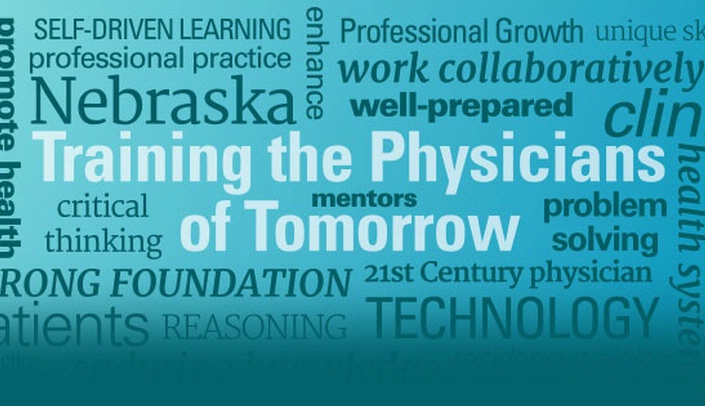The school year has begun, and for the College of Medicine, there is a mixture of excitement and anxiety that fills the hallways and classrooms – for both students and faculty.
The college is implementing a major curriculum redesign for the first time in 24 years. To say the least, it has been a major undertaking.
For the past three years, a team of more than 120 College of Medicine faculty members and staff have worked rigorously to redesign the curriculum to better reflect the learning habits of the device-oriented, online and socially-networked millennial generation.
With the beginning of school on Aug. 21, Phase I of Training the Physicians of Tomorrow was launched for incoming medical students. It's based on the concept of active learning – that students learn best when they are engaged in hands-on learning, small group interaction, and patient-centered care. We want students to be inquisitive and develop skills in inquiry.
For the College of Medicine, Kelly Caverzagie, M.D., associate dean for educational strategy, has overseen the process. I can't thank Kelly enough for assuming this massive and complex task. He has embraced the project from the outset and his enthusiasm has been infectious to the rest of his team.
But, it has hardly been a one-man job. The support and response from the faculty has been nothing short of incredible. It makes me proud to see the teamwork that this project has generated.
The College of Medicine is one of just 20 medical schools in the U.S. to be selected by the American Medical Association to be part of its Accelerating Change in Medical Education Consortium. We are in very good company. The list includes such prestigious medical schools as Harvard, Emory, Case Western, UCSF, Washington, Michigan, Utah, and North Carolina. The consortium has been charged with creating "the medical school of the future," and curriculum reform is a critical part of making this change happen.
To provide some perspective, UNMC is not the first medical school to go through a similar curriculum reform in recent years. Others have successfully accomplished it, which is reassuring. By being part of the consortium, we have been able to interact with other medical schools and pattern our reform after other schools who have been successful.
There are many things that will be different with the new curriculum. Here's a rundown of some of the key elements:
• In Phase I, over the first 18 months, students will be immersed in a series of 11 blocks that lay the foundation for the practice of medicine and provide the groundwork for the two subsequent phases.
• Students will learn different aspects of an organ system – like cardiovascular – at different points in the curriculum. Each organ system will be taught in its entirety in one block that will help students learn in a manner that reflects how physicians think.
• The teaching of normal structure and function of each organ system is followed by presentation of abnormalities in that system. The new block design allows students to see interactions between systems in a single educational exposure.
• The health systems sciences will be intertwined into the curriculum to help students develop an understanding of key principles, such as patient safety, quality improvement, health care financing, population management and the social determinants of health.
• Electronic medical records will be used to prepare students for success in their future practices.
• Emphasis will be placed on physician wellness and professional identity formation.
• The latest technology, such as iEXCEL, will engage students with realistic simulated experiences designed to make learning interactive.
• Phase II will provide extensive clinical learning experiences in the six core disciplines of medicine – surgery, internal medicine, pediatrics, psychiatry, family medicine and OB/GYN.
• Students will begin to apply the lessons learned from the first phase and formally care for patients in both hospital and ambulatory clinical settings.
• Finally, for 13 months in Phase III, students will have the opportunity to explore a variety of disciplines before they settle on their chosen specialty.
• Students will be graded on a pass/fail basis for the pre-clinical aspects of the curriculum. Then, in their third and fourth years, traditional grading categories – honors, high pass, pass and fail – will be used until they graduate.
• The idea behind the pass/fail system is that it has been shown to foster collaboration over competition. We want our students to approach medicine from a team-based perspective to reflect what practicing medicine in a clinical setting is really like.
It is truly a new era for medical education. For the College of Medicine to be part of the national AMA consortium indicates the high regard in which our medical education programs are held.
I salute our entire college for taking on the task of redesigning the curriculum. It was time. I have the utmost confidence that we will implement it in impressive fashion, and that the students who graduate from UNMC in the years ahead will be superbly prepared to meet the health care challenges of tomorrow.
